Leghorn chicken is a Mediterranean chicken breed originating in rural Tuscany, in central Italy. In 1828 form the port city of Livorno, Leghorn chickens were first exported to North America.
By 1865 this chicken breed was known as “Leghorn” (the traditional anglicisation of “Livorno”). But before that time they were initially called “Italians”.
And in 1870 this chicken breed was first introduced to Britain from the United States of America and from there re-exported to Italy. Nowadays, white Leghorn chickens are very popular and commercially used layer birds in many countries of the world.
And other Leghorn chicken varieties are less common. American Standard of Perfection included this breed in 1874 with three color varieties (black, brown and white).
They added rose comb light and dark brown variety in 1883, the rose comb white variety in 1886, the single comb buff and silver variety in 1894 and red, black-tailed red Colombian variety in 1989.
And the buff, silver, golden duckwing and rose comb black were added in 1981. Characteristics, behavior and full breed profile of Leghorn chicken is listed below.
Leghorn Chicken Characteristics
Ten color varieties are recognized in Italy, where the Livorno breed standard is recent. The Italiana is a separate Italian standard for the German Leghorn variety.
The French poultry federation divides the breed into four types: the American white, the English white, the old type (golden-salmon) and the modern type. And they listed 17 color variants for full-size birds and 14 for bantams.
The French poultry federation also recognizes an autosexing variety, the Cream Legbar. Both the American Bantam Association (ABA) and the American Poultry Association recognize numerous number of Leghorn varieties.
Most of the Leghorn chickens have single combs. In some countries rose combs are permitted, but not in Italy. Leghorn chickens have white ear-lobes and their legs are bright yellow.
Fully grown Leghorn roosters weigh 3.4 kg, hens 2.5 kg, cockerels weigh 2.7–2.95 kg and pullets 2–2.25 kg and for the bantams variety the maximum weight is 1.02 kg for the roosters and 0.91 kg for hens (according to the British standard). But the Italian standard gives a weight range of 2.4–2.7 kg for roosters, 2.0–2.3 kg for hens.
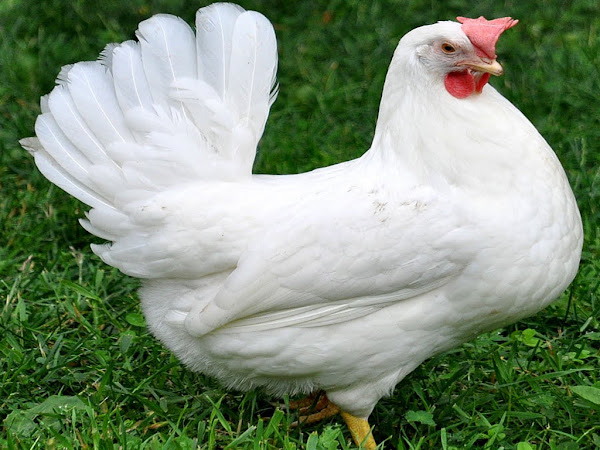
Leghorn chicken lay big white eggs and they are among the good layers. Leghorn hens lay an average of 280 eggs per year and sometimes reaching 300-320.
This chicken breed become mature quickly and they have a very good feed to egg conversion ratio. On an average, each bird need around 125 grams of feed daily. But Leghorn chicken is not good for meat production.
Uses
The Leghorn is a laying breed, and the hens are excellent egg layers. They re raised mainly for eggs production purpose.
Behavior/Temperament
Leghorn chickens are very active and efficient foragers. They are always willing to work, hunting and scratching. They are prolific layers and rarely go broody and are non-sitters (unless left undisturbed). They lay throughout the year and eggs are white and are of good size.
They grow faster and mature quickly. Leghorn chicks are very easy to rear and they feather up quickly. They can be allowed to roam freely (but they are just happy in a run).
Their comb is large so care needs to be taken in cold, frosty weather to avoid frostbite. They are pretty noisy and will roost in trees if allowed to roam freely. They are prolific layers but not good for meat production.
| Breed Name | Leghorn |
| Other Name | None |
| Breed Purpose | Egg Layer |
| Breed Temperament | Friendly, Bears Confinement well, Calm, Flighty, Noisy, Shy, Very Active |
| Breed Size | Large Fowl |
| Broodiness | Seldom |
| Comb | Single Comb |
| Climate Tolerance | All Climates |
| Egg Color | White |
| Egg Size | Large |
| Egg Productivity | Very High |
| Feathered Legs | No |
| Rarity | White Leghorns are common other varieties are less common |
| Varieties | Barred, Black, Blue, Buff, Buff Columbian, Dark Brown, Exchequer, Light Brown, White, Silver |
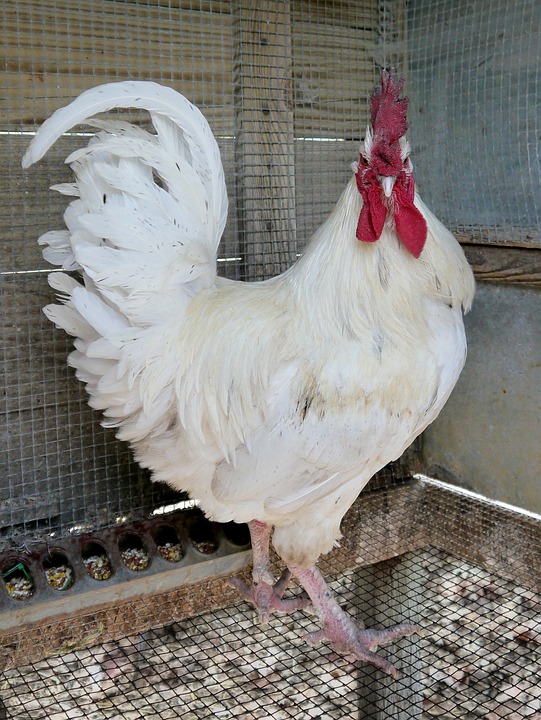
Pros/advantages
- Beautiful
- Calm
- Curious
- Easy to raise chicks
- Eats very little
- Friendly
- Great forager
- Great Layers
- Grow very fast
- Lays large white eggs
Cons/disadvantages
- Can be assertive
- Fighty
- Noisy
- Not broody and hens are not good mothers
- Not good for meat production
Is Leghorn Chicken Good for You?
Yes, Leghorn chickens are good for you if you…….
- Want to raise beautiful chickens.
- Are willing to have some chickens which lay more eggs throughout the year.
- Prefer white colored chickens and eggs.
- Want to have some fast growing and early maturing chickens.
- Want to have some calm and friendly chickens.
- Are looking for some such chickens which are great forager and very active.
- Are looking for such chicken breed which is very easy to raise and handle.


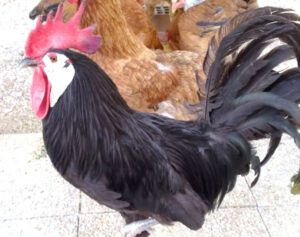
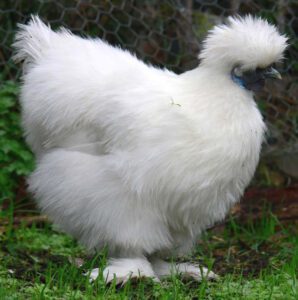
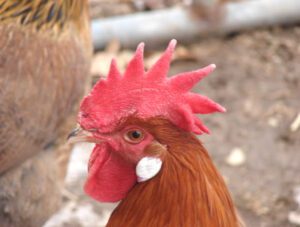


How many eggs do a leghorn chicken lay per week? Are leghorn chickens good for raising in backyard? I will be obliged if you answer these question. Thanks
Leghorn chickens are known for their excellent egg-laying abilities. On average, a Leghorn chicken can lay approximately 4 to 6 eggs per week. However, individual egg production can vary based on factors such as the chicken’s age, health, diet, and environmental conditions. Younger hens tend to lay fewer eggs initially and gradually increase their egg production as they mature. Proper nutrition and a stress-free environment can also contribute to higher egg production in Leghorn chickens.
Leghorn chickens can be raised in a backyard setting, but they may not be the best choice for everyone, depending on your specific goals and preferences. If you prioritize high egg production and have a relatively spacious and secure backyard setup, Leghorn chickens can be a good choice. However, if you’re seeking a more docile or family-friendly breed, you might want to explore other options. Always consider your specific needs, climate, and preferences when selecting chickens for your backyard flock. Good luck!